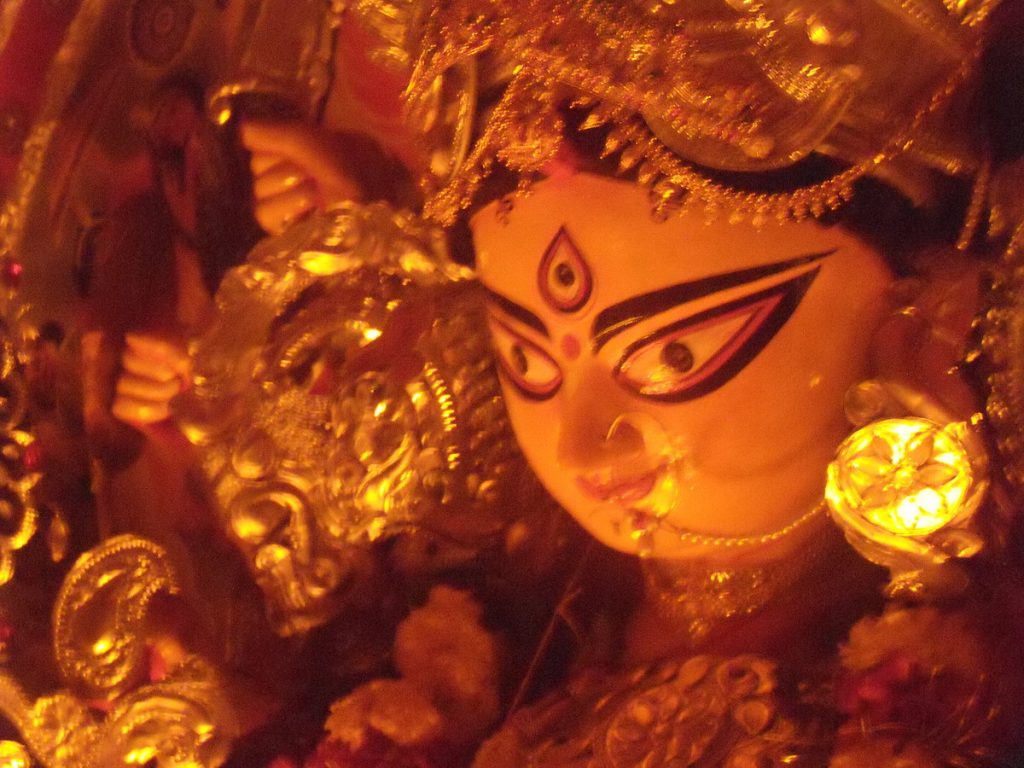Read the Navratri series here…

I fasted the whole nine days of Navratri.
Fruits during the day when hungry, and a simple sābudana khichdi or alu jeera around 8 pm. None of the fried stuff that usually goes into Navratri thālis. No rice, no wheat, no lentils.
Mediation and mantra japa in the mornings and evenings, yoga too.
And work as usual. A detailed blog on the Devi Mahatmyam in the evenings, where I read and wrote about the three episodes that form part of the allegory.
It’s unusual, this experience of fasting, I do fast on Ekādashi as well, but nine days in a row takes some patience. But you know what? A person like me, who is a stickler for time, even in food (7.30 am/12.30 pm/7.30 pm), I didn’t feel hungry at all. Not at those regular food times, not anytime else as well. The fruits supported the body, but I guess the meditation and japa calmed the mind.
Fasting does that to you. We tend to overeat, thinking that we are feeding ourselves well, but the fact of the matter is that we can do with much lesser food than we imagine. No, I don’t mean that one should follow this all the year round, but instead of going crash diets and superfood fads, just try to reduce your food intake by a small percentage, say 20% for starters. You may find no noticeable drop in energy.
In fact, you may find an increase in energy. I am not a doctor, but logically, the body learns to adapt to lesser food, and makes better use of it. Lower inputs, higher efficiency (yes, I am an engineer).
And when you manage to hit the sweet spot, where more reduction would result in a dip in energy and weakness, stop there. And don’t go back to where you started. That’s it. A simple dietary mechanism, to help you reduce weight and keep fit.
But hang on. Navratri is not a diet. It is a cleansing mechanism. Cleaning of the body and the mind. It’s a time for self-reflection, cleaning one’s thoughts and working on oneself to become a better person. Fasting doesn’t help if our thoughts and actions remain the same during these nine days – this can become counterproductive. You then become hungry, and angry. Defeats the purpose.
I went through the process to understand my own body and mind – how would I react to it? What would I think, what would I feel? Well, I now have the raw data, that I am crunching (yes yes, told you I was an engineer), and will reposition the 21-day Sādhanā to accommodate a course that is inspired by Navratri.
After all, the number nine plays an important part in all our lives, so it is only natural that we have a nine-day sādhanā – one that we can attempt twice a year, to coincide with Navratri, or otherwise as well.
Will leave you with food for thought (I recognize the pun). If the whole process is to slow down one’s metabolism and step away from the crazy pace of life, to reflect and introspect…then why is it called FASTing? SLOWing would be a better word, wouldn’t it? But then, English isn’t a very scientific language, so expecting a deeper thought from such a rudimentary means of communication would be asking for too much.
So instead, let us instead call it व्रत – vrata – the Sanskrit equivalent, which means vow, resolve or devotion, and is derived from the root ‘vr’ (will, rule, restrain, conduct). The Saurapurāṇa prescribes ten virtues which must be cultivated as common to all the vratas. These are forbearance, truthfulness, compassion, charity, purity of body and mind, curbing the sense organs, worship, offering into fire, satisfaction and not depriving another of his possession. That’s a whole lot more than not having food for nine days. That is a whole lot more to observe, and work on.
And so, next Navratri, don’t fast. Observe a vrata instead.
See you tomorrow, where we go back to the Panchatantra – the concluding portions of the third tantra. Speak soon!
